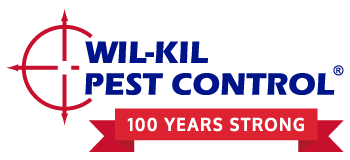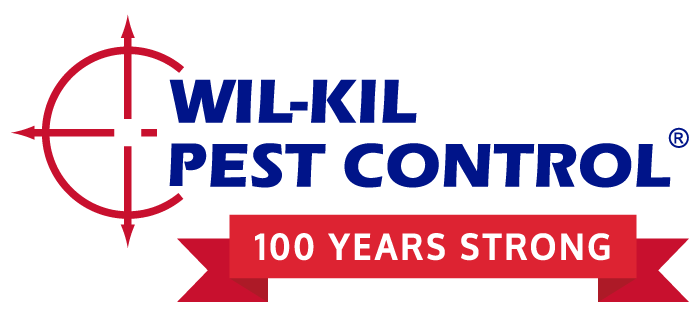Picture your hospital at its busiest: medical teams racing gurneys through the hallways, helicopters airlifting patients, ambulances shuttling individuals to and from your facility and visitors packing every available waiting space. It’s stressful enough thinking about caring for these patients, much less the process needed to disinfect shared spaces and prevent the innumerable germs from quietly spreading through your medical facility. Now, picture other visitors in this whirlwind attempting to silently undo all you have done to ensure the sanctity of your hospital. Unnerving, right? Well, these visitors exist, and we know them as rodents and insects.
Is your staff capable of warding off a pest infestation?
Hospitals provide a very hospitable environment, so to speak, for rodents and insects. The constant flux of people, plentiful food storage areas, multiple entry points and other structural factors allow for a widespread risk of pests at any hospital.
Get A Free Quote
Contacting a company specializing in Integrated Pest Management (IPM) is the first step in preventing outside invaders, but it’s the “integrated” portion that truly makes this plan successful. It requires a symbiotic relationship between your staff and the pest solutions company, sharing as much information as possible. One of the most crucial elements to ensure success is addressing what your pest control provider considers “open conditions,” or circumstances that increase the risk of pest entry. Today, we discuss some of the most common conditions your hospital’s maintenance department should be aware of and watch for on a daily basis to further enhance your building’s pest security.
Exterior Conditions
Pests live outside, so the first line of defense against pest entry is on the outside of your building. Watch for gaps and cracks underneath doors, around windows or near the foundation of your structure – all of which should be repaired in a timely fashion. Pay close attention to breakage in weather stripping at the base of doors, as the elements can erode these over time to provide accessibility for mice, rats and other pests
You will also want to consider non-traditional entrances to your facility, such as loading bay doors. The sealant surrounding the docking station will crack over time, so it’s imperative to cover those breaks soon after noticing.
Food
Open food sources can attract rodents and insects alike, and managing these food sources in a hospital setting can be challenging. In food storage areas, make sure all items are properly packaged and sealed. If you notice evidence of tampering by pests, immediately notify your pest management company. Discard food beyond its expiration date, clean up any spills and empty garbage receptacles frequently in this environment.
Next, direct your attention to food preparation surfaces and cooking appliances within your hospital’s kitchen. Spills should be addressed immediately and standing water, even beneath cooking mats, should not be overlooked. If moisture is a problem, consider using fans to help increase ventilation and pull mats up at the end of the day. Areas such as behind appliances, in the castors of mobile carts and areas where tiles may be cracked or missing grout, tend to accumulate moisture and organic material, attracting pests such as filth flies and cockroaches. Make sure to clean these areas frequently and repair any cracks in floor tiles.
Additionally, an important conversation to have with your staff pertains to storage of personal snacks. Food hidden away in a drawer will inevitably be forgotten about until a rodent sneaks through and finds your co-worker’s Twinkie from 26 months ago. Identifying a proper holding area for individual food items will benefit your IPM program in the long run, as you now can focus on a single zone instead of several desks.
Bed Bugs
Bed bugs aren’t entirely preventable, and you shouldn’t’t expect an IPM plan to fully protect your hospital’s ambulances and patient rooms from these blood suckers. With the constant shuffle of people to and from your hospital, it’s certainly likely that a bed bug outbreak will occur at some point.
The most beneficial resource to your hospital team when it comes to bed bugs is training. In conjunction with your pest management company, you should provide staff members with proper training on a bed bug’s appearance and secondary indicators of their presence, such as fecal stains. Make sure to have an action plan in place and documented, so when a problem is discovered, the right steps are taken and the right people are notified. Providing your team members with the necessary information to spot an initial outbreak will aid in a quick removal.
Be sure to examine your emergency response vehicles as well due to the ability bed bugs have to hitchhike. If a patient in the ambulance brings in bed bugs, an infestation can take hold in the ambulance, but it can also spread to the emergency room and patient rooms.
These are just a few examples of how your hospital staff can assist in preventing pests from taking hold of your hospital and compromising your sterile environments. For more information on preventing pests, visit https://www.wil-kil.com/blog/category/pest-prevention. The best defense is a solid offense, so make sure you, your staff and your pest management provider are aligned in your efforts.
If you are in need of IPM for hospitals, contact Wil-Kil.

